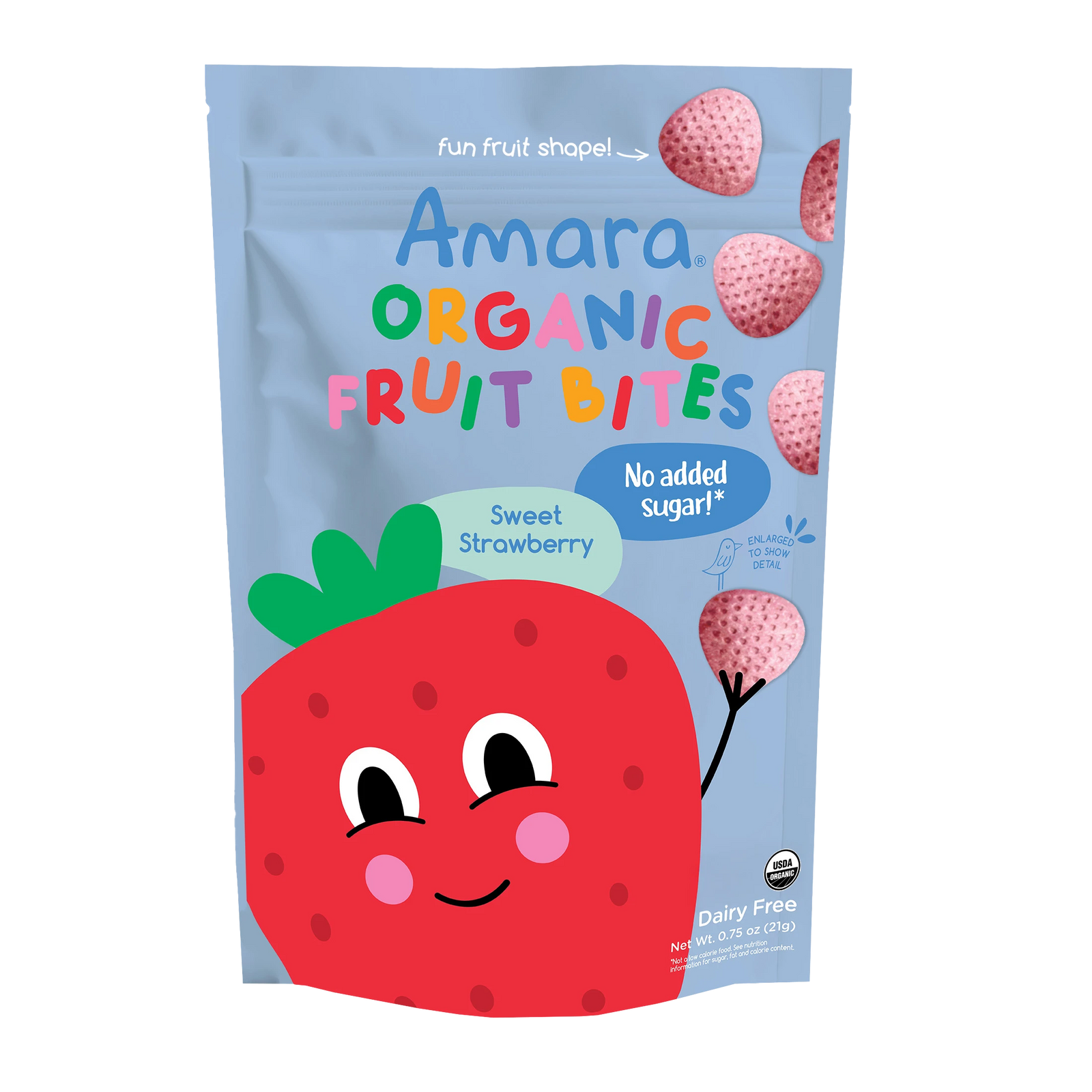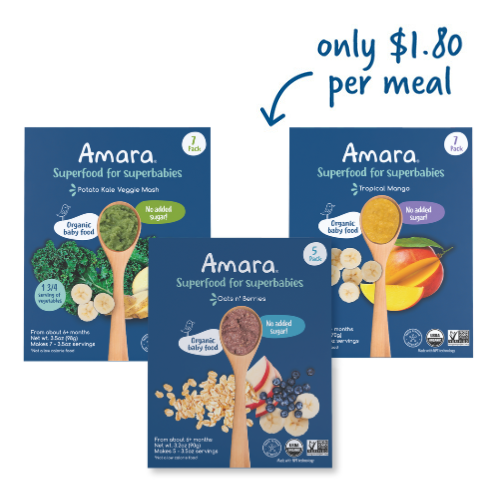
When we think and talk about feeding our babies and toddlers, we sometimes wind up hyper-focused on the minutiae of the moment: when, exactly, should we start solids? How many times a day does my baby need to eat? How much iron does she need? What high chair/sippy cup/plates should we buy? What time should dinner be? You get the idea…
These are all valid things to wonder about (of course!), but every once in a while it’s helpful to step back and think about the bigger picture — because “the baby years” really do fly by and because the broader context of feeding our kids is just as important as the finer details. We’re not feeding our kids in a vacuum, and there’s much more that plays into their developing eating habits and taste preferences than merely what we feed them.
For example, our own decisions are highly important. Indeed, nutritionists suggest making the following choices for yourself as part of your effort to teach your child about healthy eating:
- Choose whole foods (and avoid processed and ultra-processed foods as much as possible)
- Focus on incorporating vegetables and fruits as much as possible
- Opt for whole grains and flours
- Avoid added sugar where you can
- Share family meals as much as you can — this is a huge part of where and how young children learn to eat
- Avoid snacking
Of course, we parents are not the only influence… let’s step back briefly and take a look at the two sides of the coin, here: the way we (Americans) eat, and the way we (parents) eat.

The Way We Eat: The U.S.
The U.S. continues to suffer high rates of diet-related chronic diseases: more than a third of adults are living with obesity; and over 6% of adult women and 8% of adult men suffer from diabetes.
Some of us may think that in recent years we’ve seen progress in terms of access to better, fresher, healthier foods; more widespread understanding of the significance of a healthy diet; better direction about what constitutes healthy eating in the first place; and more public attention to healthy eating — and in many ways we have… but the situation is clearly not improving.
Instead of talking about “the problem of processed food” (still a problem), we’re now in the position of talking about the problem of ultra-processed food.
Ultra-processed foods were initially defined as “industrial formulations,” and besides being filled with salt, sugar and oils, they’re also stripped of any nutritional qualities (vitamins, minerals, fiber) and typically contain non-culinary substances — that is, additives that are chemically designed to mimic the sensory experiences of real foods (read: fake sh*t that human bodies aren’t meant to eat).
These ultra-processed foods are ubiquitous and highly accessible — and consumption of ultra-processed foods has grown over the last two decades — one recent study indicated that MORE THAN TWO-THIRDS of kids’ calories come from ultra-processed foods.
We probably don’t need to tell you that this^^ is not ideal for our kids. The way we eat (as a nation) is a major contributing risk factor to myriad chronic public health problems: weight gain and obesity, type 2 diabetes, high blood pressure, stroke, heart disease, cancer, and cavities (because, sugar). Plus, there is a wealth of evidence suggesting that the ways young children eat (0-7 years) lay the foundation for their eating habits and preferences into adolescence and adulthood. IOW, children who eat poorly are more likely to also eat poorly (and suffer the effects as such) when they grow up.
The situation amounts to Americans being “overfed and undernourished.”
Now, perhaps you’re thinking that we’re being a bit cynical here (guilty?), but we’re sharing all this to lead up to some brighter news: we actually ARE seeing more cultural attention to the problems with how we eat. Consumers and politicians and companies, too, are calling out manufacturers for their use of artificial additives; we’re questioning how our diets contribute to mounting problems such as food allergies and autoimmune disorders (besides obesity); and more adult Americans are eating higher-quality carbs, proteins and fats.
This is good news, indeed — because even if the broader landscape (read: America’s food culture) is seriously lacking (it is), there is a lot we can do at home to combat it.

The Way We Eat: Parents
We (American) parents are accustomed to putting our kids first — we often think about their needs and schedules and moods before we consider own — and though there’s been something of a self-care renaissance in the wake of the Covid-19 pandemic, food often gets left out, which is a darn shame!
It is so important for us parents to prioritize OUR OWN healthy eating. Not just for ourselves (yes) but also for our kids.
Babies and children take cues about how to eat from their environment — genetics and biology play a huge role, of course, but a child’s family, friends, and community also help shape their eating beliefs and habits in powerful ways.
We’ve already spoken a bit to the cultural milieu, but what about at home?
For babies and toddlers, eating is a learning process. And just like learning anything else, there’s a lot that goes into it.
In fact, a huge part of children’s learning is non-verbal. Food education with a young child need not always be spoken — it’s conveyed, simply, by our repeatedly offering our children a variety of healthy foods… and by eating a healthy diet ourselves. Because our babies are watching and taking in what they see us doing all the time.
Yes, when most of us think about starting solids, we’re so focused on what and when we’re feeding our babies that we tend to neglect the other side of the coin: what we ourselves eat and how we act.
You see, babies and toddlers aren’t just learning how to eat, they’re also beginning to learn how their family eats, too. And they pick up on a lot!
As parents, we influence our children’s developing eating habits in two main ways:
- What we put on their plate, and
- The eating environment we create (including role modeling).
The context of how we offer food is actually really important — we parents are the ones who shape our kids’ food environments and experiences. And we already know that children often model their parents’ behaviors in many ways — food is no exception.
What we eat (or, what our children see us eat) is important (of course!), but it also goes beyond that — our children pick up on our attitudes about eating, our ideas about food and new foods and meals, and what we convey (verbally or otherwise) about body image, for example.
In short, children are constantly learning from their parents and caregivers about what it means to live a healthy lifestyle.
And the idea that kids will learn about food “when they’re older” is problematic, because the first thousand days of a child’s life are actually crucial in this regard — this is a time when a child’s genetics and environment are interacting to give shape to their taste/flavor preferences and their eating habits. As scientists say, it’s a “sensitive period in human flavor learning.”
In other words, these early months and years may be our best chance to try to acclimate our children to healthy taste preferences and eating patterns. And we need to count ourselves as part of that effort.
When our kids see us make healthy choices, they’re learning. When our kids see us try new foods or flavors, they’re learning. When our kids see us smiling at the table, they’re learning.
If you want more details on eating healthy (at any life stage), nutritionists recommend the Dietary Guidelines for Americans as a great resource; and My Plate is another user-friendly and informative point of reference.

Eating healthfully goes hand-in-hand with feeding healthfully. Consider that a young child’s food tastes will go on to shape their habits as they continue to grow: just like anyone else, babies are more likely to eat foods that are more familiar to them — and they’re more likely to keep eating those foods as they age. Similarly, babies are more likely to try new foods if they’re used to trying a variety of new foods and flavors.
We all eat what and how feels familiar to us, so our goal is to familiarize babies and toddlers with the best foods we can — whole, nutritious foods and dishes that span the gamut in terms of taste, flavor, and texture. (This is where repeated exposure becomes your best tool — serve up those bitter veggies again! And again, and again, and again…)
"Children love what they know and eat what they love."
Putting all of this together^^, it can be hard (daunting, is more like it) to push back against the American culture of eating — which is clearly, despite what many of us would like to think, over-reliant on processed and ultra-processed foods. The reality is that try as we might, we just can’t insulate our children from that culture entirely — but we can focus on those things we can control, and simply by feeding our children and ourselves well, we are pushing back against that culture. And we can all work to enact generational change together: if we can feed our kids better now, we’re setting them up for a better, healthier future.
Thankfully, we ARE seeing improvement — and eating healthy doesn’t have to take hours of food prep or break the bank. At Amara, it’s our mission to set the foundation for a lifetime of healthy eating by making 100% whole foods convenient and accessible for every family. We know that infancy and toddlerhood provide critical opportunities for improving our children’s health and nutrition, and all of Amara’s organic baby foods and toddler snacks are produced using a nutrient-pressed technology that locks in all the good stuff (nutrients, tastes, textures) and steers clear of additives and sugar.








Babies need animal foods in their diet to get optimal nutrition. Healthy fats like butter also. A good resource is the book Super Nutrition for Babies.
– Pam November 07, 2023